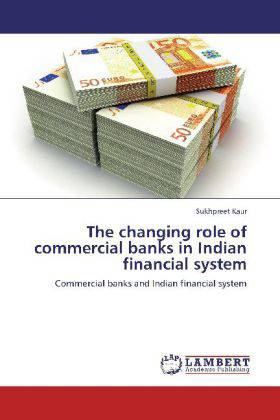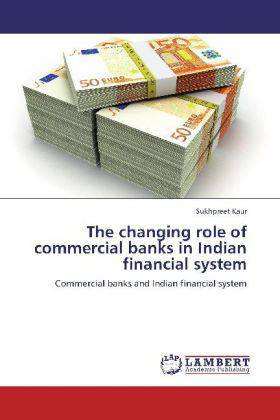
- Afhalen na 1 uur in een winkel met voorraad
- Gratis thuislevering in België vanaf € 30
- Ruim aanbod met 7 miljoen producten
- Afhalen na 1 uur in een winkel met voorraad
- Gratis thuislevering in België vanaf € 30
- Ruim aanbod met 7 miljoen producten
Zoeken
The changing role of commercial banks in Indian financial system
Commercial banks and Indian financial system
Sukhpreet Kaur
Paperback | Engels
€ 63,45
+ 126 punten
Omschrijving
Banks are among the main participants of the financial system in India. The Indian banking has come from a long way from being a sleepy business institution to a highly proactive and dynamic entity. This transformation has been largely brought about by the large dose of liberalization and economic reforms that allowed banks to explore new business opportunities rather than generating revenues from conventional streams (i.e. borrowing and lending). In India the Reserve Bank of India acts as a centralized body monitoring any discrepancies and shortcoming in the system. It is the foremost monitoring Body in the Indian financial sector. The nationalized banks (i.e. government-owned banks) continue to dominate the Indian banking arena. The Indian banking can be broadly categorized into nationalized, private banks and specialized banking institutions. Under the ambit of the nationalized banks come the specialized banking institutions. These co-operatives, rural banks focus on areas of agriculture, rural development etc.
Specificaties
Betrokkenen
- Auteur(s):
- Uitgeverij:
Inhoud
- Aantal bladzijden:
- 72
- Taal:
- Engels
Eigenschappen
- Productcode (EAN):
- 9783848422937
- Verschijningsdatum:
- 7/04/2012
- Uitvoering:
- Paperback
- Afmetingen:
- 152 mm x 220 mm
- Gewicht:
- 118 g

Alleen bij Standaard Boekhandel
+ 126 punten op je klantenkaart van Standaard Boekhandel
Beoordelingen
We publiceren alleen reviews die voldoen aan de voorwaarden voor reviews. Bekijk onze voorwaarden voor reviews.











